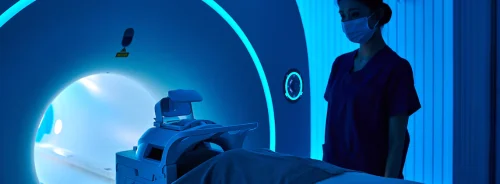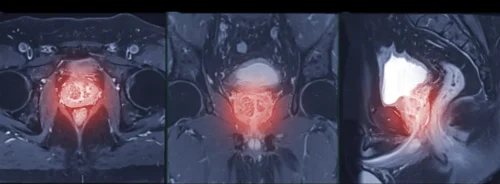HealthManagement, Volume 25 - Issue 3, 2025
Quanterix is transforming biomarker detection with its Simoa® technology, enabling ultra-sensitive measurement of disease markers in blood. Its platforms (HD-X, SP-X® and SR-X®) support early diagnosis and research across neurology, oncology and more. Clinical validation, including in Alzheimer’s detection, demonstrates global relevance. Through partnerships and scalable systems, Quanterix is helping bring advanced diagnostics to broader clinical practice.
Key Points
- Quanterix enables ultra-sensitive biomarker detection at femtogram levels in blood samples.
- Simoa® platforms support multiplexed, reproducible assays for diverse clinical applications.
- Plasma biomarkers like pTau217 improve early Alzheimer’s detection and risk stratification.
- Global partnerships are expanding access to blood-based diagnostics in routine healthcare.
- Flexible instruments allow rapid assay development with minimal sample volume.
A New Era in Diagnostic Sensitivity
Scientific discovery has often been driven by the need to see more clearly, to measure more precisely, to understand more deeply. In the world of diagnostics, this translates to detecting diseases earlier and with greater accuracy. For decades, the limits of detection have constrained how early a disease can be identified or how precisely its progression can be tracked. Quanterix, with its Single Molecule Array (Simoa®) technology, has broken through those limits, enabling the measurement of biomarkers at levels once thought unreachable. This leap in sensitivity is not merely a technical advance but a clinical and scientific milestone–one that is redefining how researchers and clinicians approach disease.
By pushing detection thresholds down to the femtogram per millilitre (fg/mL) range, Quanterix offers a new lens into human biology. Diseases can be identified earlier, treatments monitored more effectively, and scientific questions approached with a resolution previously impossible. Across a wide range of fields–neurology, oncology, cardiology, immunology and infectious disease–this technology helps uncover the biology that traditional tools have left invisible. This capability is not only advancing academic science but also redefining the clinical pathways available to patients.
The Science Behind Simoa®
At the heart of Quanterix’s platform is its proprietary Simoa® technology. Using either bead-based or planar array formats, the system isolates and quantifies individual biomolecules with a level of precision that transforms the way diagnostic science is conducted.
In bead-based assays, paramagnetic beads are coated with antibodies that bind specific target proteins. These beads are then loaded into over 200,000 microwells, each so small it can hold just one bead. A fluorescent signal is generated and amplified if the target molecule is present, enabling single-molecule detection. Planar array assays operate on a different principle, spotting antibodies in circular arrays on microplates. These enable multiplex detection of up to 10 analytes per well, providing scalability and robustness ideal for immuno-oncology and systems biology.
Both approaches are enhanced through proprietary fluid dynamics, surface chemistry and image analysis algorithms. Together, they create a platform that is not only sensitive but reproducible, user-friendly and adaptable to diverse clinical and research environments.
Platform Versatility: SP-X®, SR-X® and HD-X
Quanterix has developed a suite of instruments to make its technology accessible to a wide variety of users. The HD-X platform is the most comprehensive, supporting full automation and multiplex detection with a catalogue of over 80 assays. It is the instrument of choice in high-throughput research settings where scale and consistency are essential.
For labs focused on imaging and high-plex analysis, the SP-X® system uses Simoa® planar array technology to detect up to 10 biomarkers per well. With its compact design and built-in machine learning for image analysis, SP-X® offers powerful multiplexing capabilities while remaining user-friendly and space-efficient.
The SR-X® system provides a more compact and affordable solution while retaining the core sensitivity and flexibility of the platform. Supporting up to four analytes per assay, it is particularly suitable for settings where sample volume is limited or throughput is moderate. Researchers benefit from intuitive touch screen controls, minimal maintenance and streamlined workflows.
These systems share compatibility with a wide range of commercial and custom assays. Researchers can adapt pre-existing kits or develop their own, allowing full control over study design and target selection. This interoperability also simplifies technology adoption across different institutions and laboratories.
Clinical Validation in Neurodegeneration
Nowhere is the impact of ultra-sensitive detection more visible than in neurodegenerative diseases. Alzheimer’s disease, long diagnosed by exclusion or through invasive procedures, can now be detected and monitored with blood-based biomarkers using Quanterix technology.
A longitudinal study in Brazil (Santos et al. 2025) exemplifies this progress. Researchers analysed plasma samples from a cohort of 145 elderly participants, using the HD-X platform to measure phosphorylated tau (pTau181 and pTau217), NfL, GFAP and other key biomarkers. Results showed that pTau217 levels, particularly when considered in relation to Aβ42, closely mirrored cerebrospinal fluid (CSF) biomarker profiles. The pTau217/Aβ42 ratio achieved an area under the curve (AUC) of 0.98, indicating excellent diagnostic performance.
Moreover, these plasma markers predicted disease progression. Elevated levels of pTau181 and pTau217 at baseline were associated with conversion from mild cognitive impairment to Alzheimer’s disease, offering a non-invasive way to identify individuals at risk.
This work is particularly valuable in low- and middle-income countries, where access to PET scans and CSF analysis is often limited. Blood-based diagnostics powered by Simoa® open the door to earlier intervention, better disease tracking and more inclusive research. Importantly, these biomarkers performed reliably even in a cohort with diverse comorbidities, reflecting real-world clinical variability.
Partnerships Extending Clinical Reach
Quanterix is also building the clinical and operational infrastructure needed to bring its technology into routine use. In the United States, ARUP Laboratories has launched a blood test for pTau217 using the SP-X® platform. This test supports clinicians in diagnosing cognitive decline in older adults, enabling more accurate differentiation between Alzheimer’s and other causes.
Neurogen Biomarking has also adopted the technology to support an at-home blood collection service. Patients can now access Alzheimer’s biomarker testing remotely, making early detection more convenient and accessible. This model represents a new era of proactive health engagement and decentralised diagnostics.
In Australia, NSW Health Pathology has validated neurofilament light chain (NfL) for routine use, further illustrating the growing international footprint of Quanterix platforms. These examples demonstrate how biomarker innovation is being embedded into national healthcare systems.
Beyond Neurology: Broad Applications Across Disciplines
The advantages of Simoa® are not limited to neurodegenerative disease. In oncology and immuno-oncology, the SP-X® enables researchers to measure cytokines, chemokines and checkpoint inhibitors simultaneously, even at baseline levels. This supports studies on tumour microenvironments, immune response and therapeutic impact.
In cardiology and infectious disease, subtle fluctuations in inflammation markers can have prognostic significance. The ability to detect these at early stages supports preemptive intervention and personalised treatment.
Furthermore, the platform’s flexibility ensures that researchers can respond rapidly to emerging questions. Custom assays can be developed and scaled across compatible instruments, conserving precious samples while enhancing reproducibility. The simplicity of workflows and short assay times make it easier for labs to keep pace with evolving research priorities.
Global Relevance and Scientific Equity
Validation studies in underrepresented populations are essential for equitable healthcare innovation. The Brazilian dementia cohort is a step toward ensuring that blood-based biomarkers are effective across diverse demographic and clinical backgrounds. Given the global burden of Alzheimer’s and the high rate of underdiagnosis, particularly in developing regions, these findings carry substantial implications.
Quanterix technology meets this need not only through its performance but through its practicality. Instruments are designed to integrate into existing laboratory workflows, with intuitive interfaces, low maintenance requirements and scalable throughput. Compatibility with electronic laboratory management systems and data export functions also supports broader data integration.
As the field moves toward more personalised, accessible diagnostics, platforms like Simoa® will be essential in ensuring that scientific advances reach the populations who need them most. Expanding biomarker access helps create a more inclusive diagnostic ecosystem.
Conclusion: Seeing Deeper, Acting Sooner
In the past, detection limits often defined the boundary between early intervention and late diagnosis, between insight and uncertainty. Quanterix has shifted that boundary. By enabling scientists and clinicians to measure at femtogram levels, to detect changes before symptoms arise and to monitor disease with exquisite precision, the company has changed what is possible in biomedical research and clinical care.
This transformation is not just about sensitivity. It is about making complex science accessible, turning discovery into action and bringing innovation to the point of care. From academic laboratories to public health systems, Quanterix technology proves that when you can measure more, you can do more. And in healthcare, doing more–sooner, smarter and for more people–can make all the difference.
Looking ahead, the continued expansion of assay panels, broader clinical validation and integration into digital health platforms will only increase the relevance of Quanterix systems. With science pushing further into the molecular foundations of disease, the ability to detect what was once invisible will define the next generation of medicine. Quanterix has already shown that future is not only possible–it is within reach.
Conflict of Interest
Spotlight articles are the sole opinion of the author(s), and they are part of the HealthManagement.org Corporate Engagement or Educational Community Programme.






